Sylvia and I were in Italy for two weeks. I’m going to do four posts about it. This is #1 Pisa. I’ll also have #2 for Lucca, #3 Florence, and a #4 of Genoa.
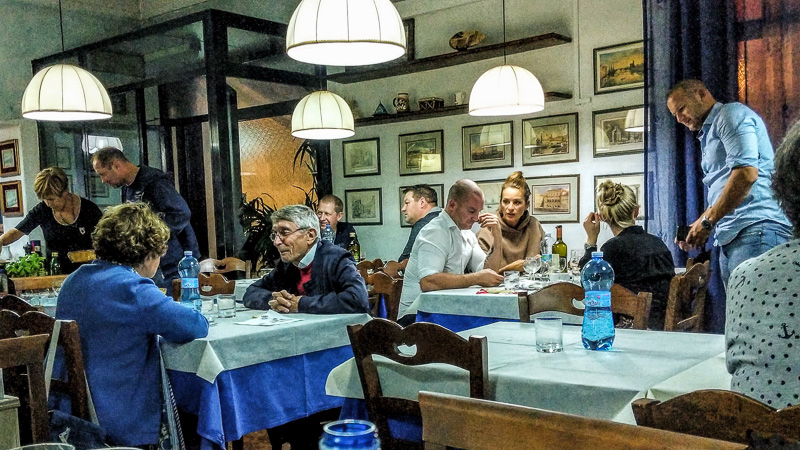
We were guests at the Internet Festival 2019 which organized a bunch of talks, displays, and demos. Eating is one of the many good things about being in Italy. This was a place called Schiaccianoci which means “nutcracker,” don’t ask me why. It was a seafood restaurant, just amazing, full of local types. Fabio Gadducci took us there. He’s friends with the owner. He didn’t really order in detail; the owner just brought us a long series of good plates.

Who’s Fabio? Our contact a the con, a great guy. I think this cigarette were from Ukraine or something. Just tobacco! But people smoke odd brands in Europe. Fabio is a professor at the University of Pisa, involved with computer science, software engineering, and the history of computation. Also very much a boulevardier, a charming man about town, with friends everywhere.
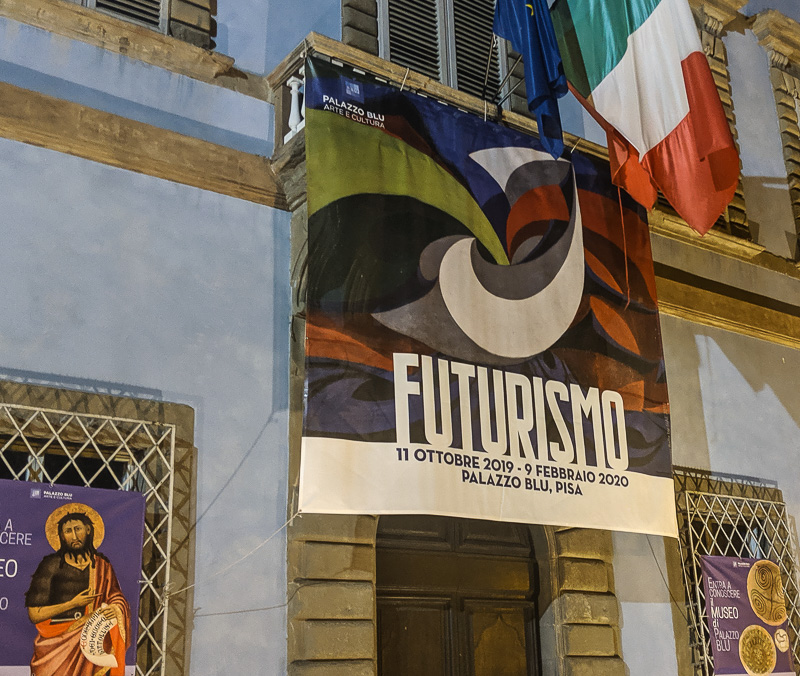
Fabio pointed out that there was a show of Futurist art in town. Sylvia and I actually pushed our way in there for the opening night party…I told the guy at the door I was a famous American science fiction writer…and he said to come back in half an hour and he’d let us in.
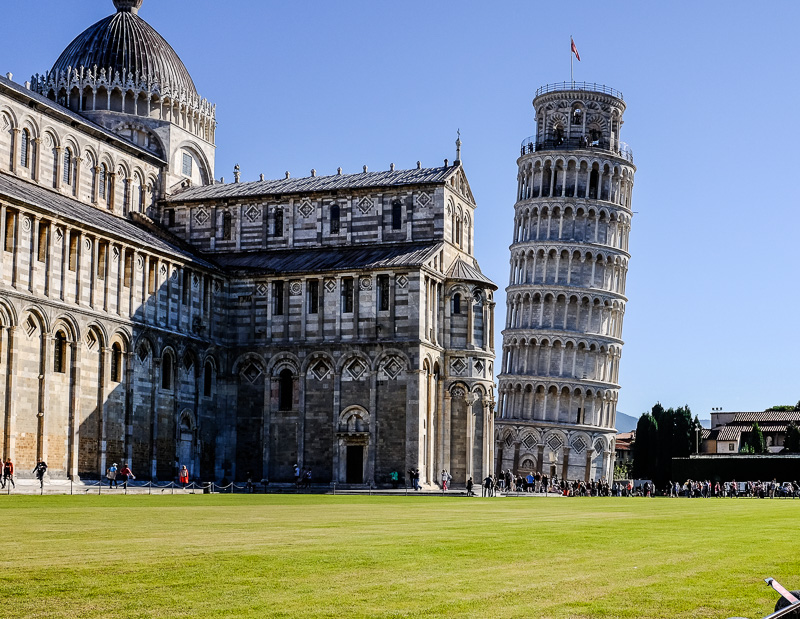
Naturally we checked out the Tower of Pisa. They actually worked for centuries, off and on, at stabilizing it. Ut was very cool, of course but the crowd of tourists at this spot was kind of brutal. And everyone but everyone was posing with their hands up so the photo would look like they were propping up the tower.
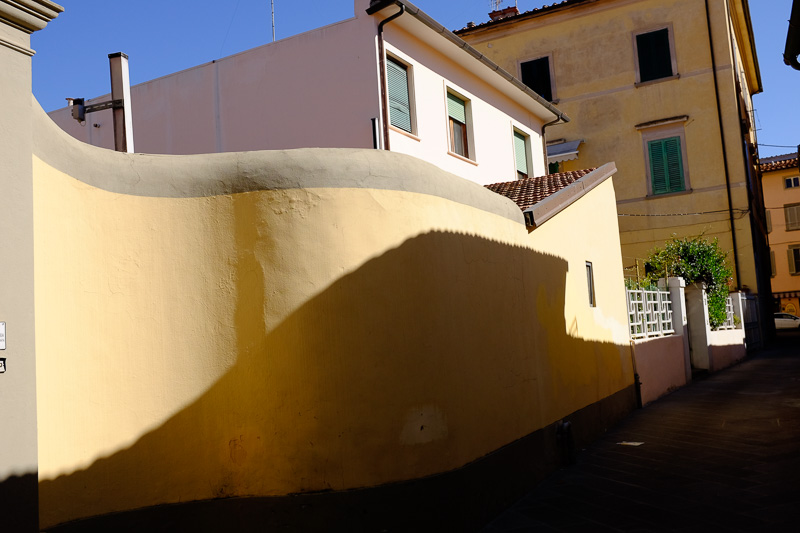
Mostly we were walking more or less randomly around Pisa. A lot of walls in Italy are yellow, or peach, or apricot, or brick red, or pink. Mediterranean. I like the curve of the shadow here.
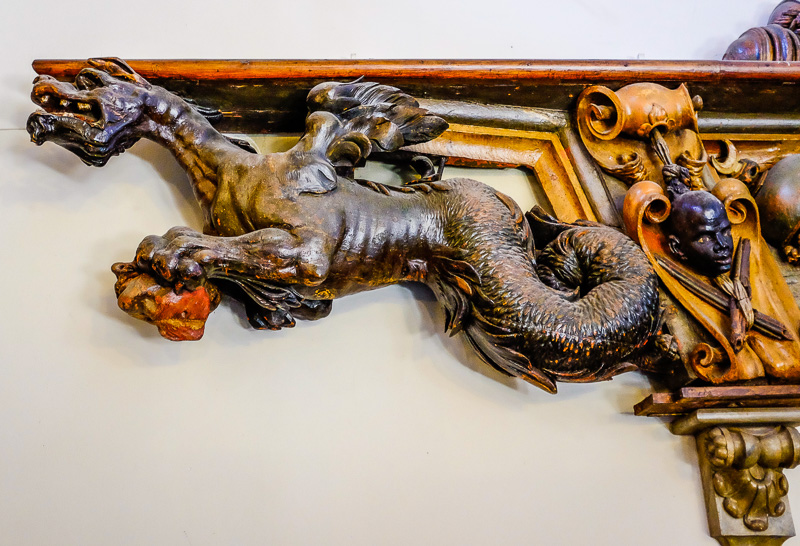
One of the churches we went into had this cool old bowsprit from a ship. I think maybe it was a model of the original, but an old model.
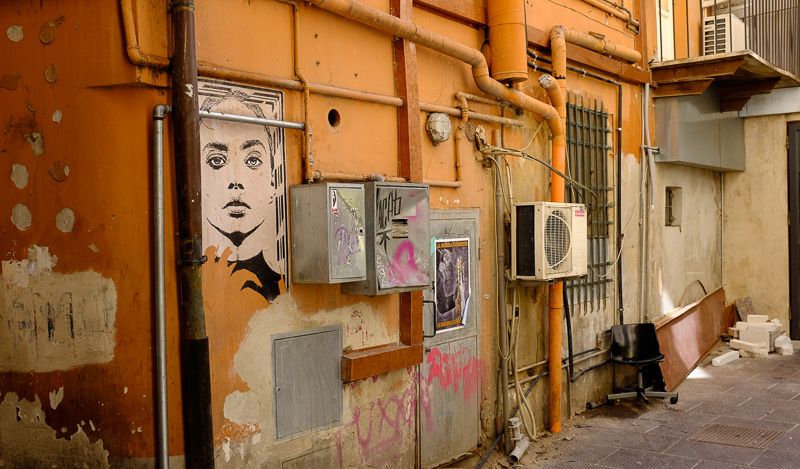
Plenty of art graffiti around, stenciled on. Tiny streets and alleys. I like this spot, the 3D jitter.
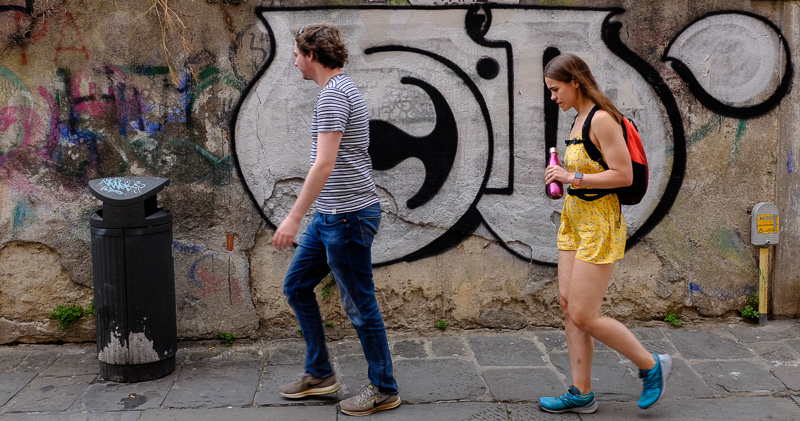
Lots of this one fat graffiti logo too, all over town. I never could figure out what it said.
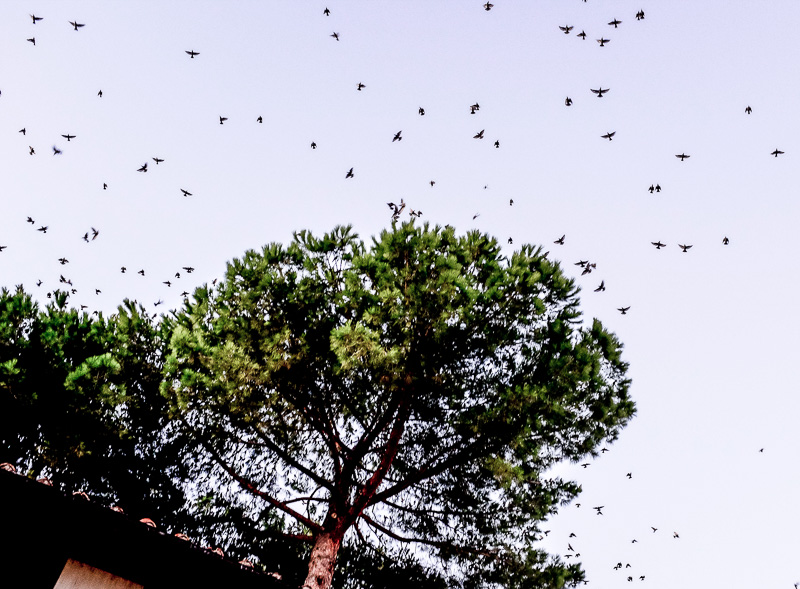
Fabio arranged it so the organizers gave us free lodging in what I guess was a university dorm. At night a huge, I mean humongous flock of birds would swirl around and around, settling down into a few big pine trees. I asked one of the locals about it. They said a bird flock is called a stormo, and that this particular kind of bird here is also called a stormo. Once they were in their tree, settled down, they kept cheeping and squawking for a long time. A wonderful multifarious sound.
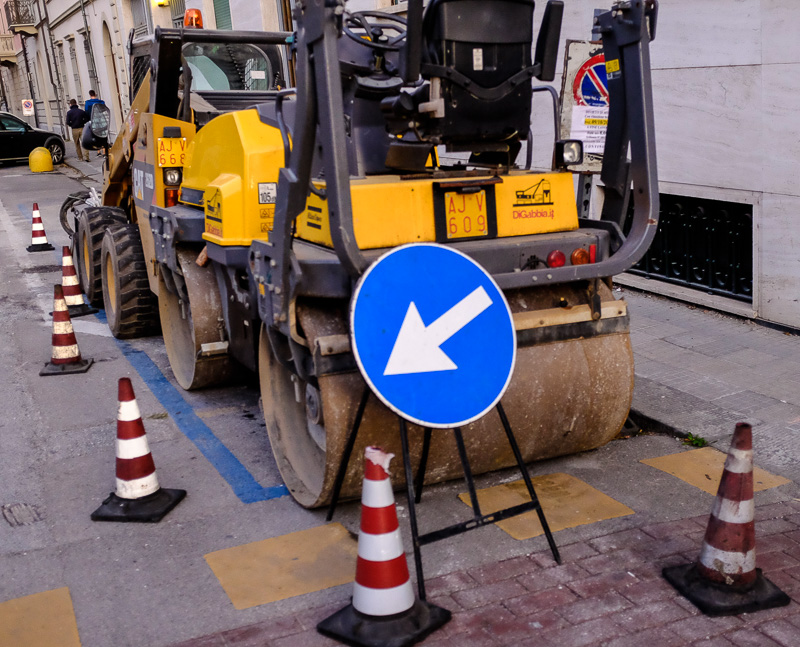
Design in everything; the Italians are masters of design. This think t looks like a conscious animal. Resting. “Tomorrow I work. Or maybe the day after that.” It’s amplified with the presence of sign that looks like a cursor symbol. Once we get our 3D augmented reality effectors in place you’ll be able to click on the steam roller and lift it up into the air.
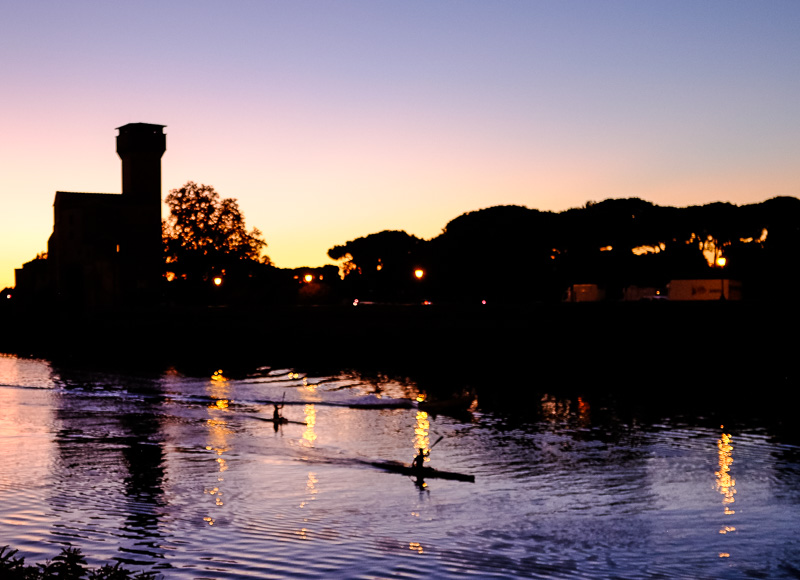
Our dorm was by the River Arno, which runs from Florence, through Pisa, and into the Mediterranean west of Italy. Scullers here, in the sunset. The tower was a guard post for a gate into the city, back when. If the guys in the tower didn’t like the looks an new arrival, they’d throw rocks down onto them.
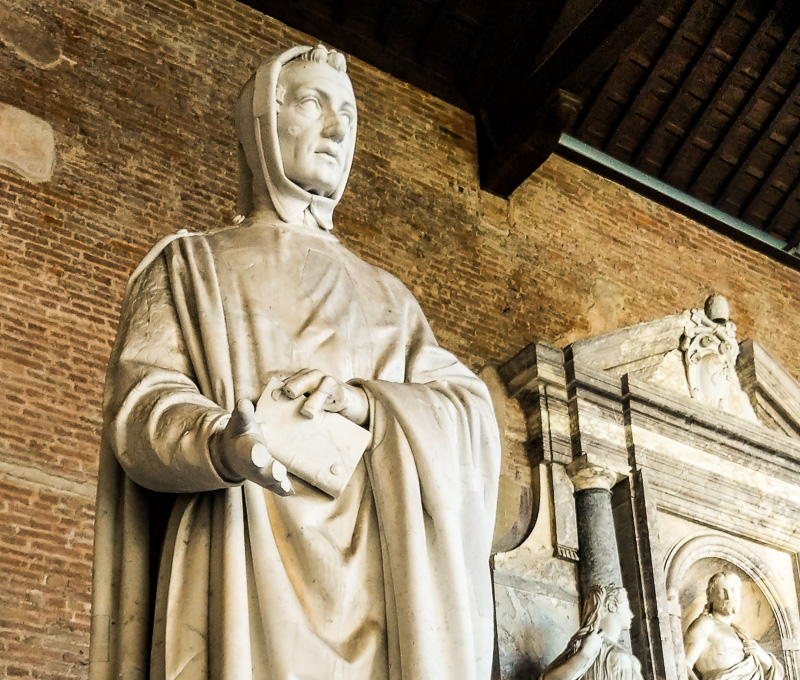
Here’s Leonardo of Pisa, more commonly known as Fibonacci. On the street, he’s best known for the Fibonacci series of numbers. Each Fibonacci number is the sum of the two before. You start with 1 and 1. You add them and get 2. And so on. So the Fibonacci series is, like, 1, 1, 2, 3, 5, 8, 13, 21, 34, 55, 89, 144, 233, 377, 610. 987, and wheenk on. They’re based on a story about raising pairs of rabbits and counting how many you have.
The silly story is in Fibonacci’s classic Liber Abaci of the year 1202. The most important math book of the Middle Ages. It taught Europeans how to use zeroes, Arabic numerals, and positional notation. Which gave arithmetic an exponential speed-up. Relative to those times, it was practically like getting computers.
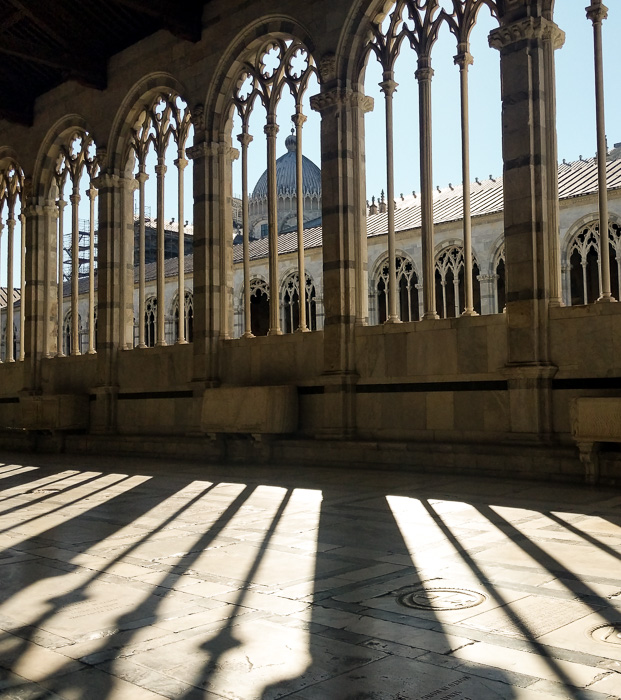
Fibonacci’s statue is in this really beautiful arcade near the Leaning Tower, it’s called the Camposanto, like Holy Field, it’s sort of a graveyard. They mixed in some soil from the Holy Land.
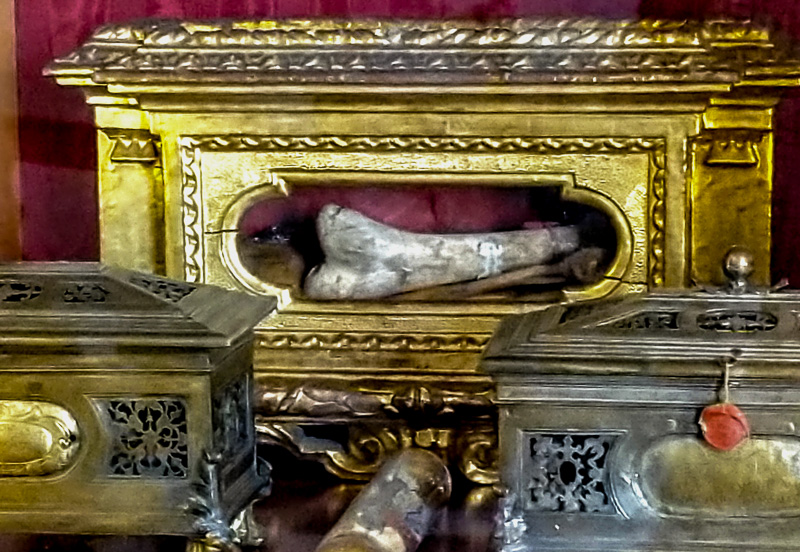
They had a chamber with a bunch of saints’ relics, like piece chunks of bone. This chunk is from St. Costanza. So gnarly.
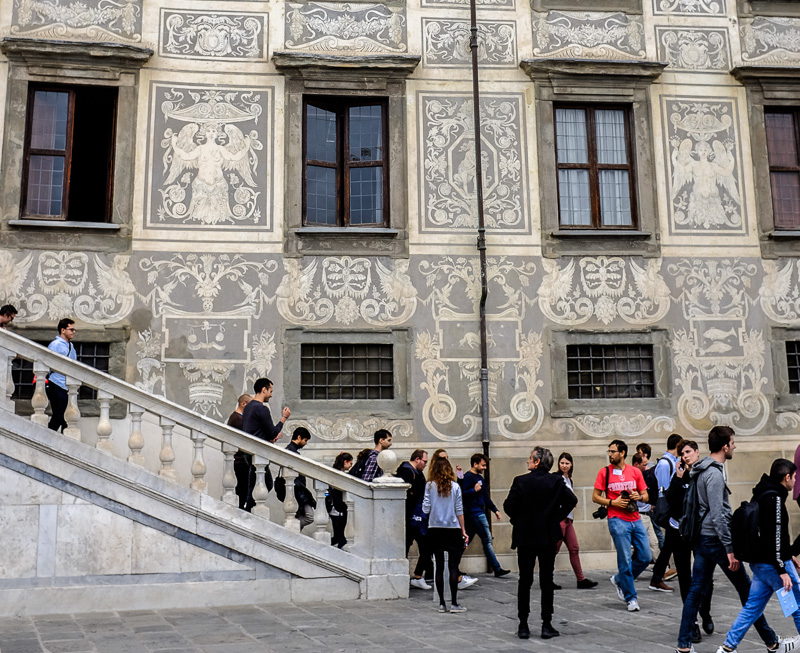
Dig the beautiful Art Noveau stenciling on this building. I think those might be Uni Pi students coming out.
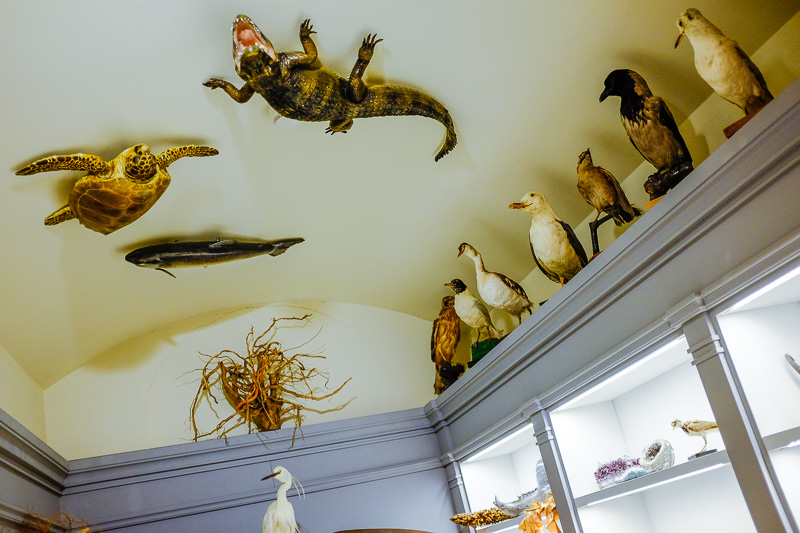
Rooting for sights, Sylvia and I ended up in the Pisa Botanical garden, and within it was a little museum, and in the second floor of the museum, we assiduous seekers found some very cool stuffed animals. It was a small room, so they mounted a few of the on the ceiling to good effect.
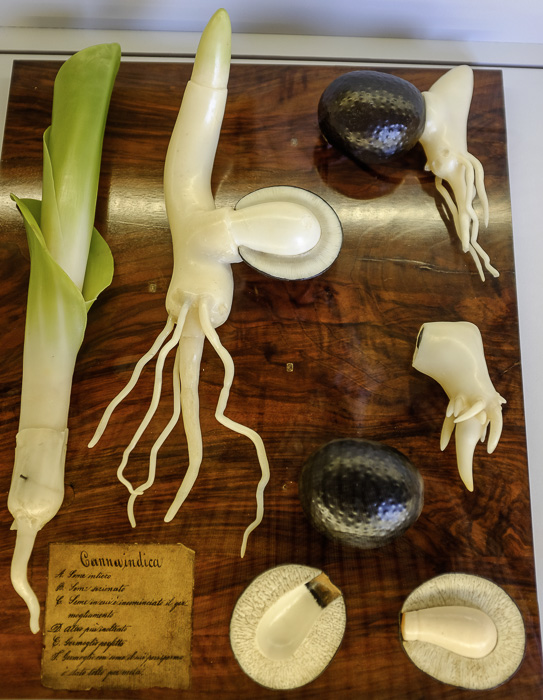
And there was something even better in the next room: big models made of colored wax. A very cool sculpture medium. This one shows the sprouting of a leek in extensive detail. I looked at it for a really long time.
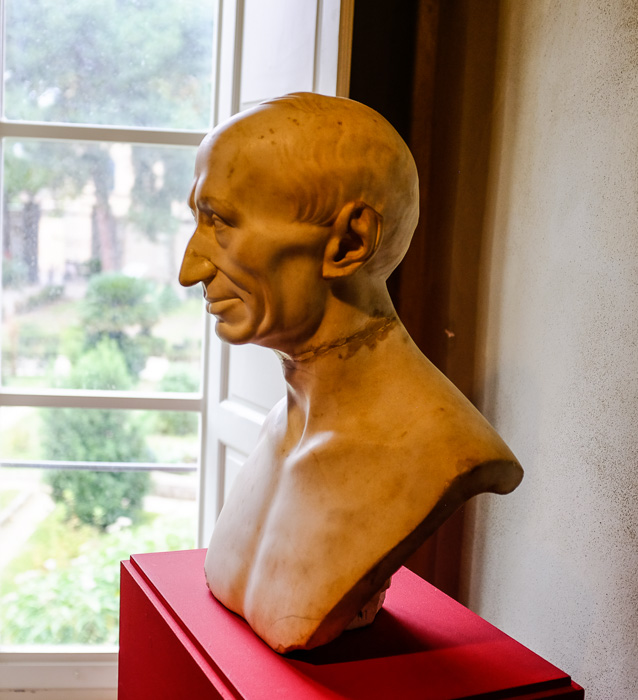
This here is the old time University of Pisa prof who made those models; and the little museum in the Bot Garden is named after him. He’s marble, not wax.
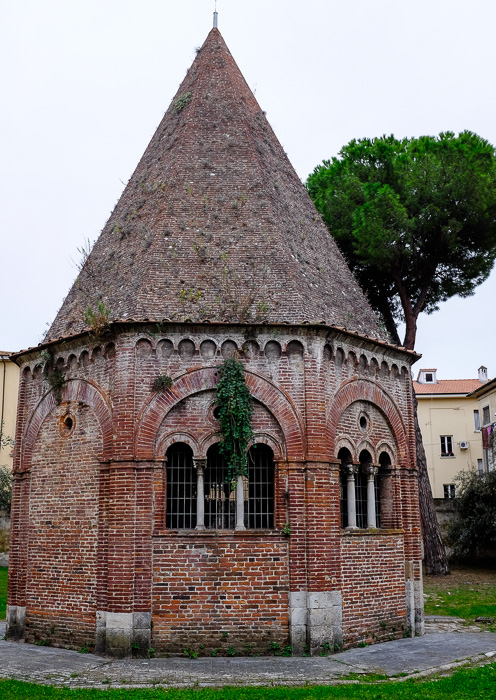
We had a large church near our dorm; it always seemed to be closed, though we should have checked on Sunday morning. Behind it was this very Hieronymus Bosch type building with a pointed roof. A lot of stormo birds came here in the evening. The building is, I think, what they call a baptistery…for some reason baptism rated a whole separate building.
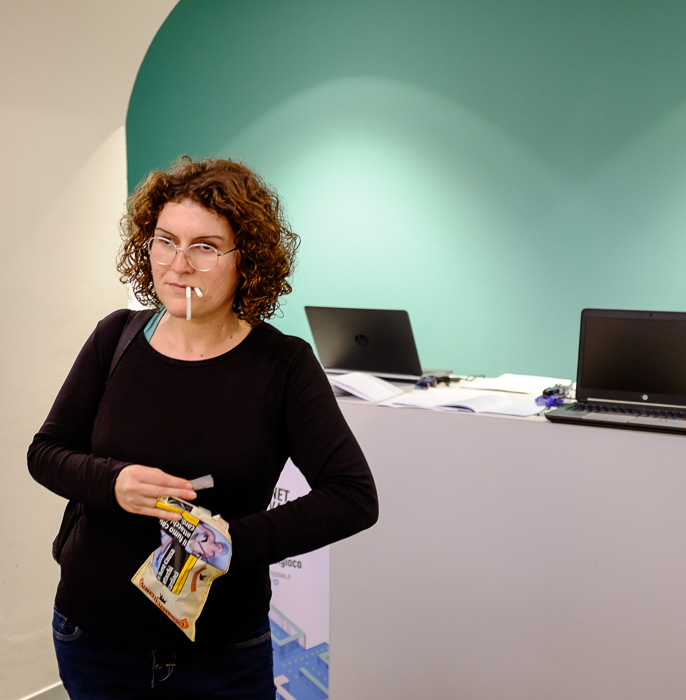
This is Laura, a pleasant computer scientist working, I think, at the Uni Pi, she was at the con and I talked to her a few times. Don’t know what she’s doing with the cigarettes, but I grabbed her photo. (I’ll find her last name later.)
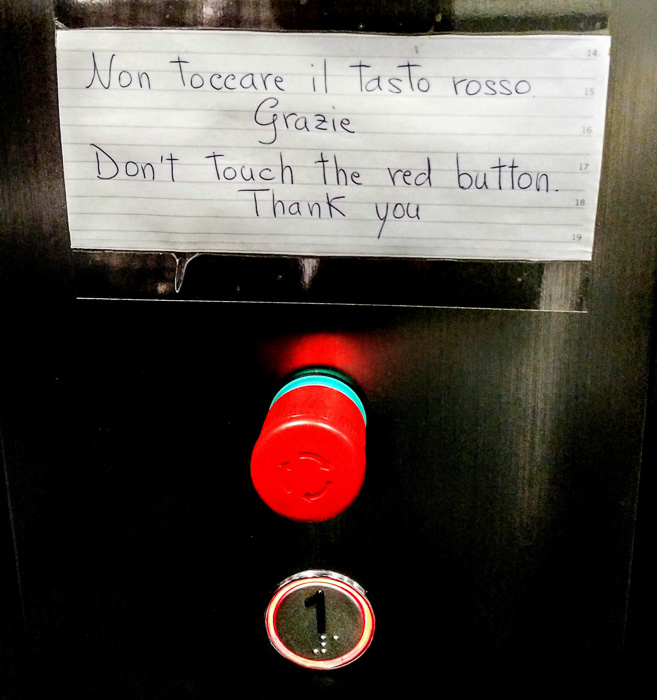
This was in the elevator at the botany museum. The opening shot for an SF adventure, right?
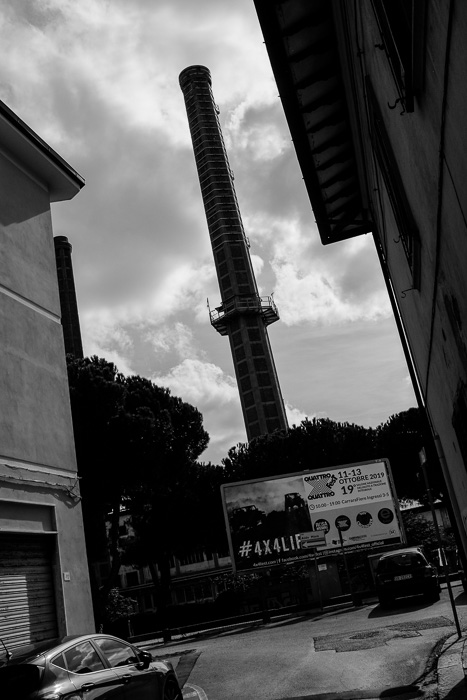
One day I was at loose ends, and wanted to find place to have lunch, and looked at Google maps, which led me to hell and gone, ending at a spot that seemed to unsavory, so I kept walking, in a more working-class neighborhood now, near a factory, flipped into the black-and-white world of Neorealist cinema.
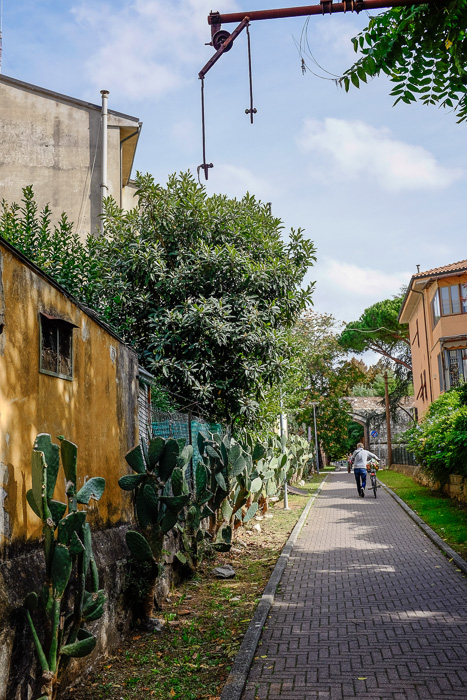
It’s so nice to get off the beaten track. Everything is interesting, everything is different, sanctioned sights don’t matter. I liked this dangling thing up there—remnant of the Inquisition? Something to do with horses? And dig the prickly-pear hedge. Like in California.
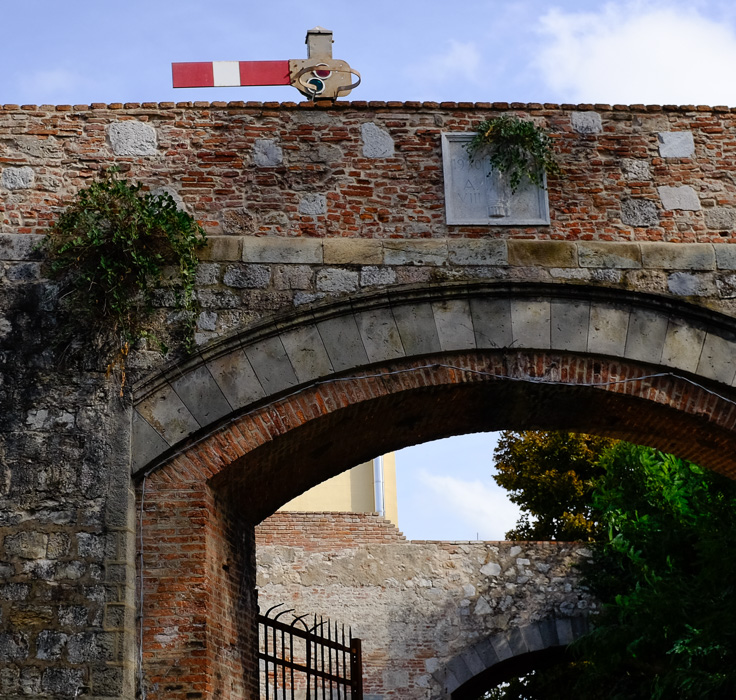
Another gift from the muse of strolling. The red and white bar is nice addition, also the toothy fence. This is a chunk of the old city wall.
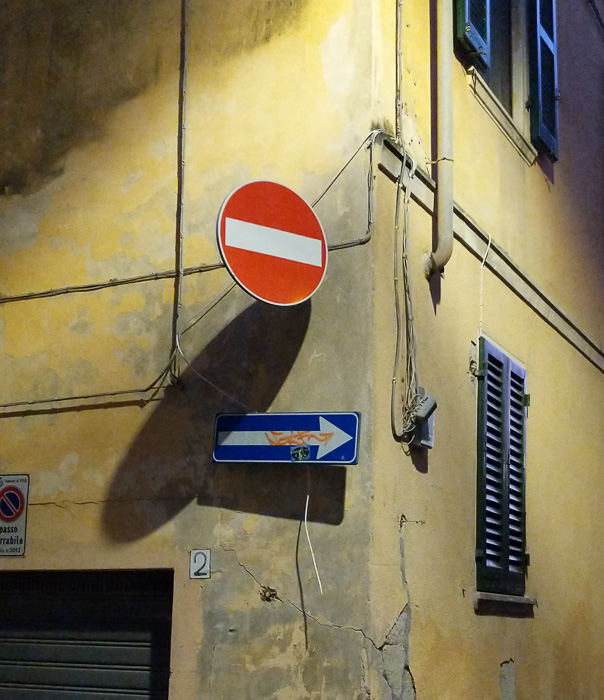
I know it’s cheap to photograph signage, but sometimes, well, you gotta. Especially when it’s night.
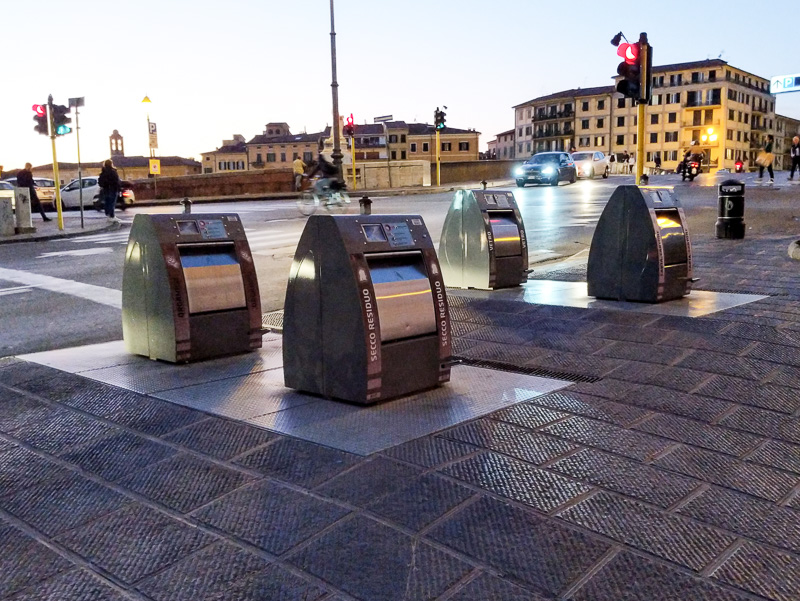
More on the genius of Italian design. These shapes are trash bins. The genius part is that each of those visible metal pimples is attached to a subterranean bin the size of the cargo hold on a truck, with the bin’s long side going down into the ground, and the pimple on top. In the morning an insanely ultra-designed huge garbage truck with a crane on top lifts each trash pimple high into the air—with its hidden trash bins now visible, dangling—and squeek a door on the bottom of bin hinges open, and the trash falls into the truck.
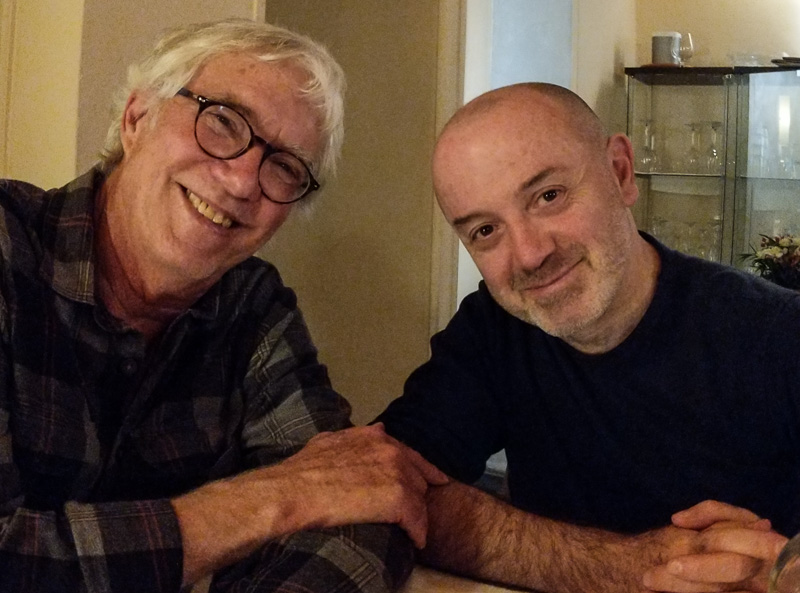
This is my very dear friend Daniele Brolli, who translates my SF books into Italian. He’s William Gibson’s translator as well. Brolli is a great translator because he’s an author himself. I try and see Brolli whenever I’m in Italy; he’s one of the kindest and most intelligent people I know.
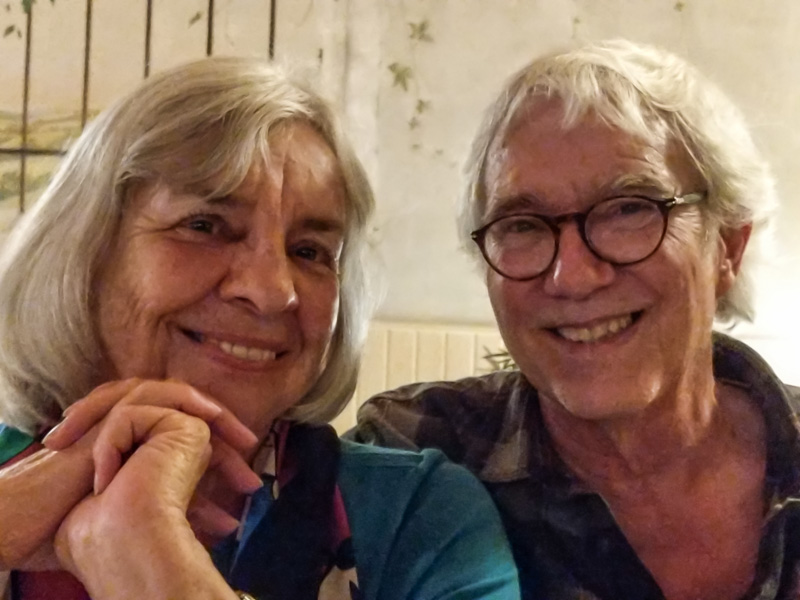
With Sylvia at that restaurant with Brolli.
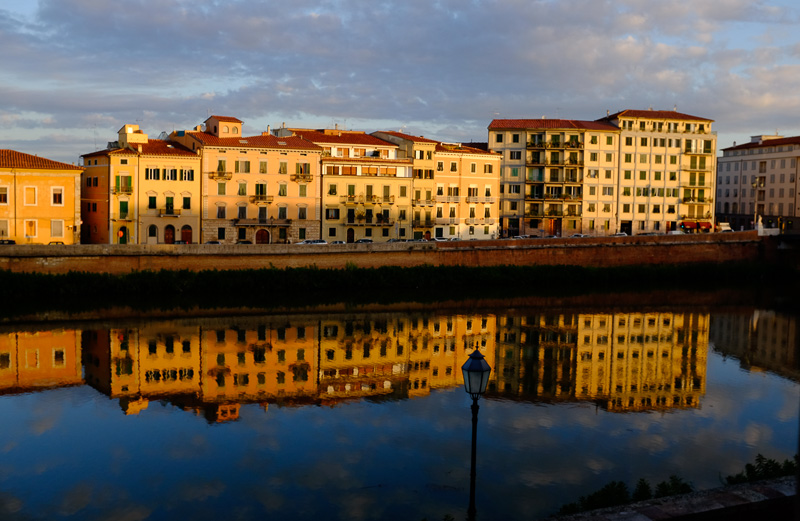
The Arno in the morning. I’ve love seeing buildings reflected in rivers!
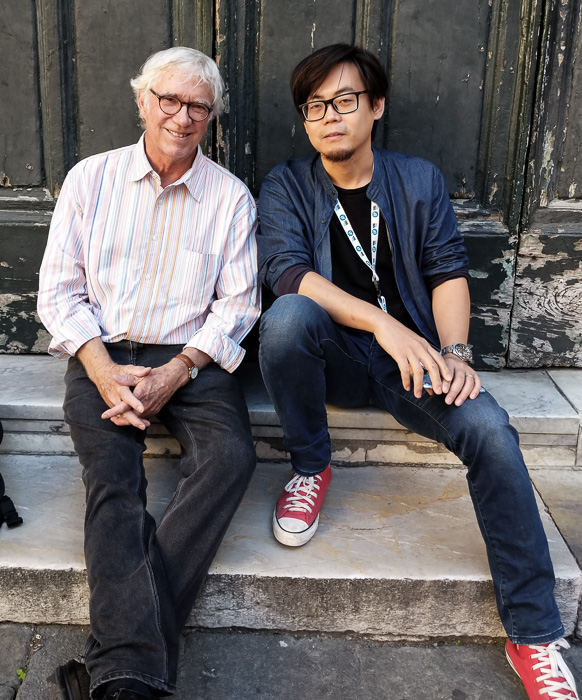
And here’s Ran Zhang, a cool Chinese SF writer. He says he’s not a cyberpunk…he’s in a different category, but what that is I don’t exactly know.
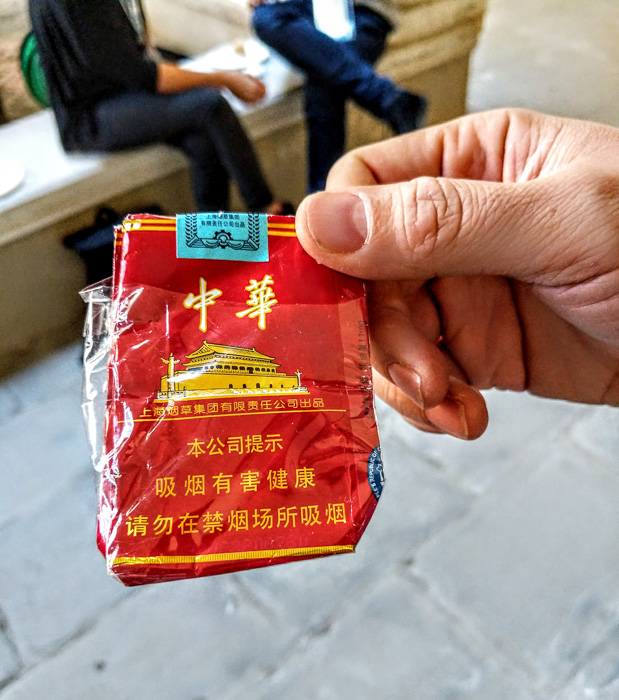
It was fun hanging out with Ran. He gave me a Chinese cigarette to smoke. Our peace pipe.
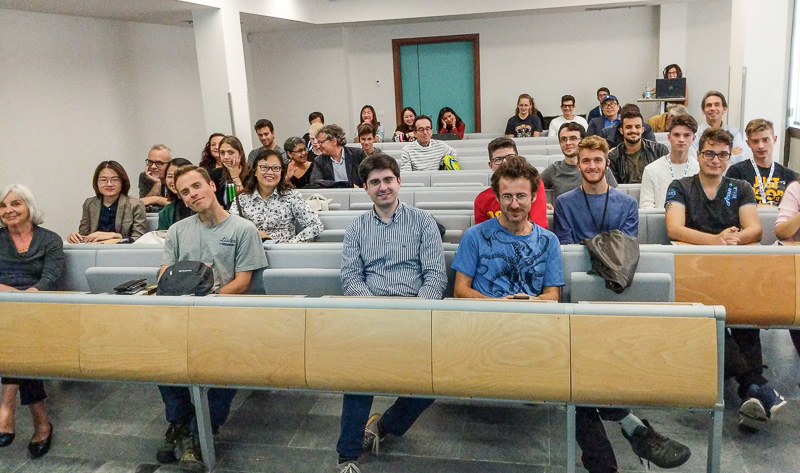
These were the people at the talk I gave, it was called “Lifebox, Telepathy, and Immortality,” and rather than using PowerPoint, I put the text and slides of the talk online as a blog post. It went over well, and in the process of giving the talk and answering questions I got some new ideas. . Daniele Brolli introduced me, and Ran Zhang talked too.
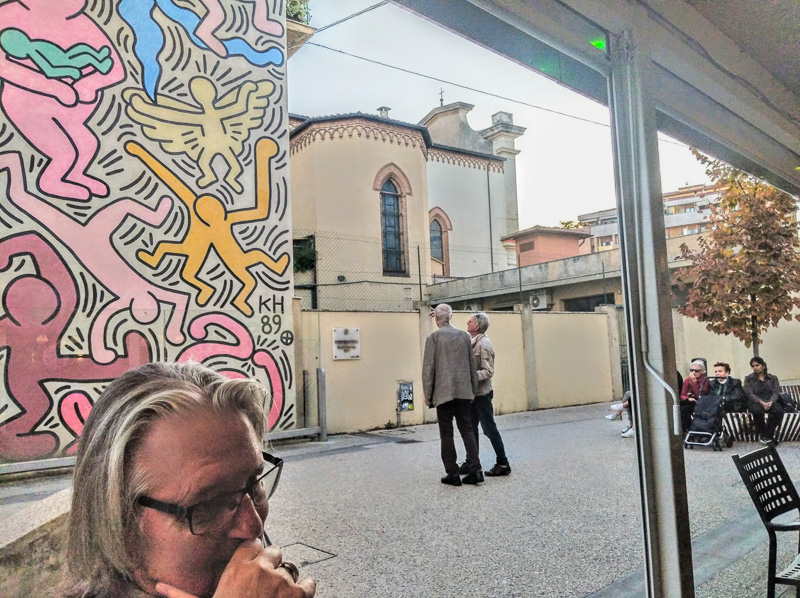
Bruce Sterling showed up, which was great. I love that guy. We’ve published a book’s worth of stories together, Transreal Cyberpunk. It was a pleasure to hear his talk…he was going on about various kinds of colorful cybercriminals, which was funny as the speaker just before him had been laying out an idealistic fantasy about how “everyone willl soon agree on basic rules of how to use the internet.” As if!
We took this photo in a bistro near the Pisa train station, we were waiting for a seafood restaurant to open. Kind of a Di Chirico feel to this setting here, and of course we’ve got a Keith Haring mural in the background. Bruce is an allegorical figure of some kind, but I’m not sure what the allegory is.
We might be working on a new story together…something peripherally involving Fibonacci.
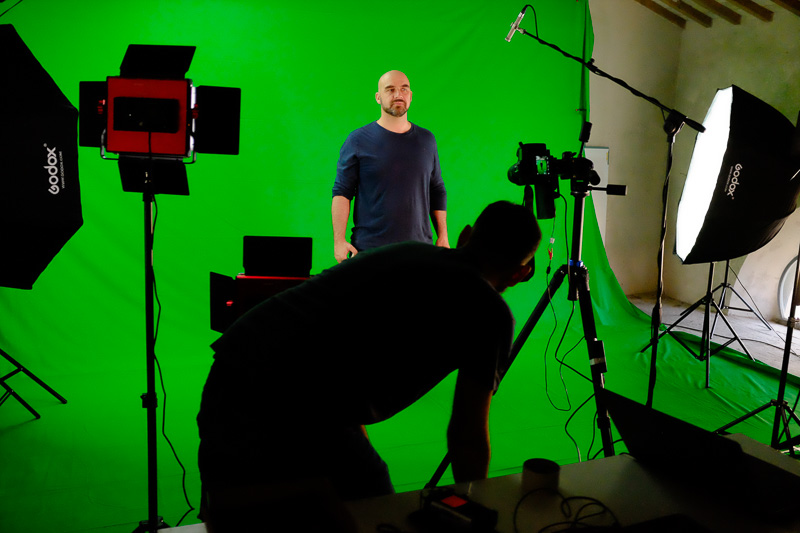
My last day in Pisa, Roberto Malfagia and some of his cool VR guys from Florence made a 3D film of me. The group is called La Jetee, you can see an example of their work here. Being recorded by them I felt like the next stage of the Rudy lifebox bot. That’s not me standing there, that guy is for getting the focus right. The guy in silhouette is nice photographer Manuel.
I told about an SF scenario I’d been thinking about. For immorality, we’ll take advantage of natural computation, in particular we store a person’s lifebox-ghost as a pattern in the octillion interwingled atoms of a stone. Let’s say it’s a gravestone. Your soul is in there.
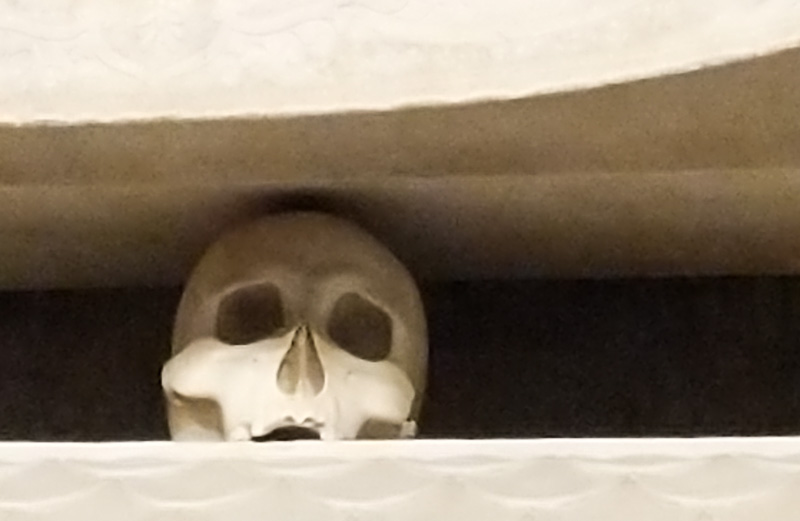
And whenever you aren’t embodied as a juicy ghost in a living organism, your soul in the stone is waiting for some person or, better, some animal to chance past. And you can do a surgical, cyberknife-type, tight-beam narrowcast of your code into the brain (and the muscles!) of an animal.
And then you live in the animal for awhile as a juicy ghost. A crow. He circles up into the air, a rising gyre. In explaining this, I made a theatrical, swirling, upward gesture with my hand, with a Tim-Leary-type pitchman’s smile on my face, faking ecstasy for the camera.
Arrivederci, Pisa! And grazie.









November 20th, 2019 at 7:52 am
Pisa is wonderful. So happy you and Sylvia had a wonderful time.
December 3rd, 2019 at 3:32 pm
She’s handrolling smokes with filters, and she’s holding her unfinished work in her mouth.